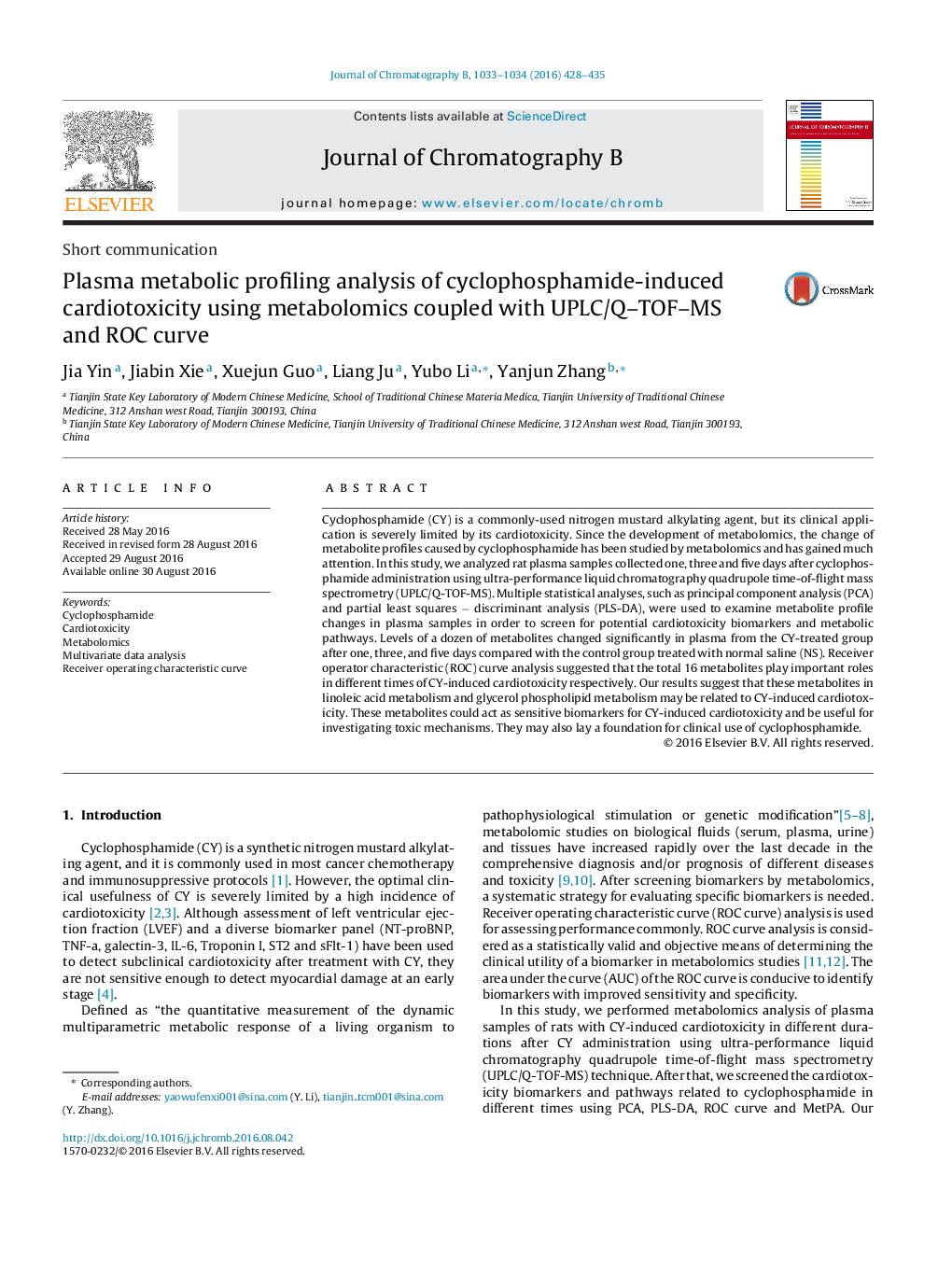| کد مقاله | کد نشریه | سال انتشار | مقاله انگلیسی | نسخه تمام متن |
|---|---|---|---|---|
| 6481347 | 1494024 | 2016 | 8 صفحه PDF | دانلود رایگان |

â¿¢Potential biomarkers were figured out from three time-points by multivariate statistical and integration analyses.â¿¢Two metabolic pathways related to cyclophosphamide were identified by metabolomics.â¿¢ROC curve was used to validate the rationality of the biomarkers.â¿¢Metabolomics technology provides a strategy for research on mechanism of CYâ¿¿induced cardiotoxicity.
Cyclophosphamide (CY) is a commonly-used nitrogen mustard alkylating agent, but its clinical application is severely limited by its cardiotoxicity. Since the development of metabolomics, the change of metabolite profiles caused by cyclophosphamide has been studied by metabolomics and has gained much attention. In this study, we analyzed rat plasma samples collected one, three and five days after cyclophosphamide administration using ultra-performance liquid chromatography quadrupole time-of-flight mass spectrometry (UPLC/Q-TOF-MS). Multiple statistical analyses, such as principal component analysis (PCA) and partial least squares â¿¿ discriminant analysis (PLS-DA), were used to examine metabolite profile changes in plasma samples in order to screen for potential cardiotoxicity biomarkers and metabolic pathways. Levels of a dozen of metabolites changed significantly in plasma from the CY-treated group after one, three, and five days compared with the control group treated with normal saline (NS). Receiver operator characteristic (ROC) curve analysis suggested that the total 16 metabolites play important roles in different times of CY-induced cardiotoxicity respectively. Our results suggest that these metabolites in linoleic acid metabolism and glycerol phospholipid metabolism may be related to CY-induced cardiotoxicity. These metabolites could act as sensitive biomarkers for CY-induced cardiotoxicity and be useful for investigating toxic mechanisms. They may also lay a foundation for clinical use of cyclophosphamide.
191
Journal: Journal of Chromatography B - Volumes 1033â1034, 15 October 2016, Pages 428-435